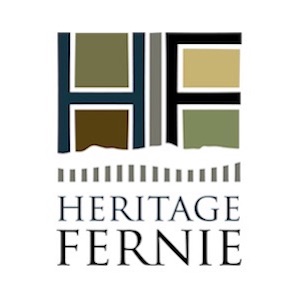BUILDING ON THE PAST, INFORMING THE FUTURE
The Fernie Heritage Strategy considers a deeper understanding of Fernie’s heritage, from the distant past up to the present day. This includes the city’s early roots alongside its ongoing significance as part of the lands and stories of the Ktunaxa First Nation. The strategy will identify and incorporate the broad historical context, community heritage values and historic places that have ongoing importance to Fernie-ites.
The Fernie Heritage Strategy recommends key actions to guide the City and its partners to manage change in such a way that the community’s heritage values are retained, enhanced, celebrated and embedded into overall community planning.
The Fernie Heritage Strategy is a succinct and implementable heritage program for Fernie providing key strategic actions. It is:
Big picture. It is based on a comprehensive understanding of Fernie’s history and heritage, as seen in its buildings, structures, landscapes, neighbourhoods, community rituals and intangible resources.
Integrated. It aligns with Fernie’s OCP and concurrent City master plans and strategies that staff can easily integrate into existing and future planning initiatives, that will be applicable and inclusive to all of the City’s resources, and relevant over the next several decades.
Community based. It is led and co-developed by a community steering committee, and will be informed by consultation, engagement and involvement of the local residents, stakeholders and leadership.
Forward looking. It is based on current thinking and best practices in heritage conservation.
A VALUES-BASED APPROACH TO HERITAGE CONSERVATION
Heritage conservation used to primarily focus on early, custom designed buildings –their design, their materials and how to restore them back to what they looked like at the time of construction.
Heritage conservation today is based on the more current understanding that what makes something part of our heritage is not whether it is a building or a landscape, but the value that we place on it. Values-based conservation strives to protect heritage values, rather than focusing solely on aesthetic or historic elements of places. A values-based approach ensures that a community first determines and understands what it holds as significant about its past and about its community heritage identity, before deciding what or how it will conserve. At its most basic, heritage is what people value and want to hand on to the future.
Heritage Context is important. Before focusing on individual sites or buildings we start with considering the larger context, historic districts,cultural landscapes and the evolution of a community over time.
Vernacular. We now consider that the vernacular and the everyday have heritage value: the representative and common row of houses, corner groceries, outdoor gathering places –often the most cherished historic places and crucial illustrations of a community’s heritage values.
Relevancy. Heritage values, districts and buildings are key to revitalization and community renewal and are great candidates for adaptive reuse and hubs for new ideas. Using our heritage as a touchstone for planning our future is the best way to ensure its conservation. The integration of the understanding of our heritage into current planning initiatives and processes will ensure an authentic, diverse, vibrant and sustainable city.
PROJECT OBJECTIVES
Identify and protect Fernie’s heritage and character through an integrated, holistic, sustainable approach to heritage conservation.
Re-affirm the identity of the town through a community-wide understanding and celebration of its heritage and character.
Create heritage policies, strategies and actions for managing change and development in Fernie that are:
- informed and guided by its community heritage values and through a process of community consultation
- consistent with legal and administrative limitations, and that reflects principles in Fernie’s Official Community Plan and other master plans and planning initiatives completed or currently underway in the community
- pragmatic, technically sound and provides clear implementation guidelines in support of local and regional economic sectors
Integrate heritage conservation into overall community planning processes
